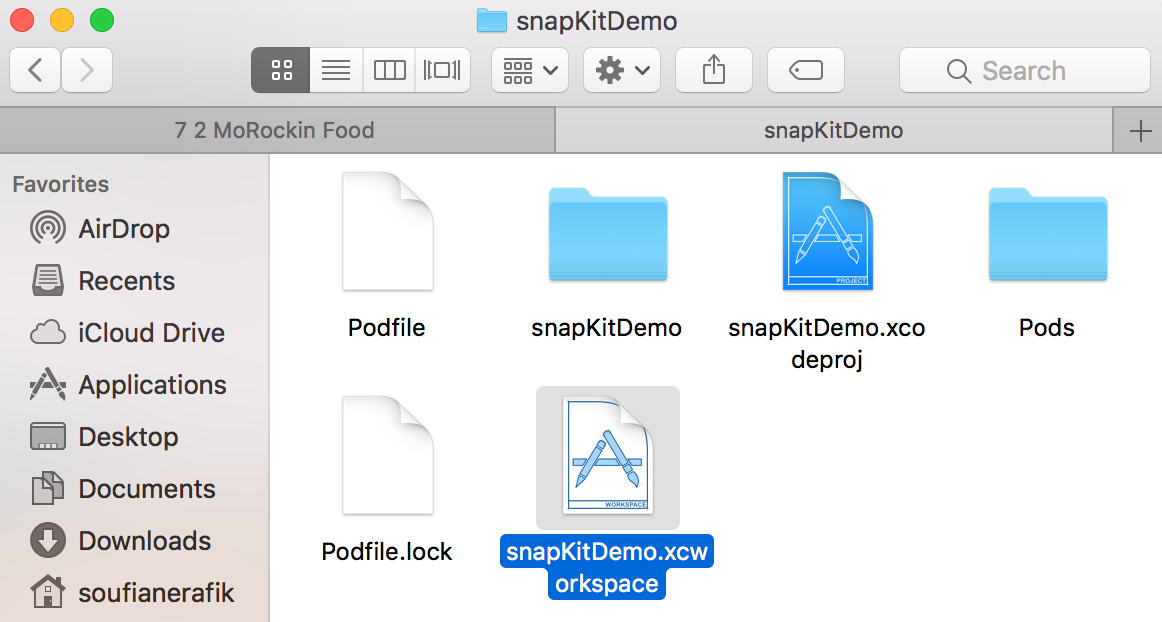

This might not be the cleanest C# API and is probably missing some functionality, especially if you want to modify/inspect the raw video buffer, but it suits my requirements.
IOS POD ADD CODE
Once the binding was building, I created a sample project based on some native Swift examples I found, essentially porting the code over to C#. RTCPeerConnection PeerConnectionWithConfiguration(RTCConfiguration configuration, RTCMediaConstraints constraints, IRTCPeerConnectionDelegate Up To test launching an App Clip from the beginning, also consult Apple’s doc on Testing Your App Clip’s Launch Experience. -(RTCPeerConnection * _Nonnull)peerConnectionWithConfiguration:(RTCConfiguration * _Nonnull)configuration constraints:(RTCMediaConstraints * _Nonnull)constraints delegate:(id _Nullable)delegate You can now run your App Clip target from Xcode by selecting your App Clip target from the scheme drop-down, selecting an iOS 14 device and pressing run. Public interface IRTCPeerConnectionDelegate Essentially, Sharpie bound an Obj-C method to a C# property to expose a nicer API.įor this binding I didn’t need any of the constant fields bound in the interfaces marked with ConstantsInterfaceAssociation, so they were commented out. Usually, MethodToPropery attributes are pretty safe to accept as is and can just be commented out. For this binding we’ll have to deal with MethodToProperty and ConstantsInterfaceAssociation. The first place to start is with the Verify Hints. The bindings generated by Sharpie are a great starting point, however, there are some things the tool cannot do which need to be fixed up manually. Next copy the contents of ApiDefinitions.cs and StructsAndEnums.cs generated by Sharpie into the corresponding files in the binding library.
IOS POD ADD FOR MAC
Open up Visual Studio for Mac and start a new iOS Bindings Library.Ĭopy the amework directory into the project and add it as a Native Reference.
IOS POD ADD INSTALL
✔ Updating iOS native dependencies with pod install in 8.Creating the Binding Library Create a Binding Project ✔ Copying web assets from dist to ios/App/App/public in 525.16ms version doesn't match version.Ĭonsider updating to a matching version, e.g. ✔ Creating in android/app/src/main/assets in 1.56ms
IOS POD ADD UPDATE
It will basically update the iOS native dependencies with pod install: ✔ Copying web assets from dist to android/app/src/main/assets/public in 736.17ms So when the developer that installs the plugin synchronizes the project with the following command: npx cap sync

S.dependency 'GoogleAnalytics', '~> 1.0.0' # If you need to specify a version, you only need to separate it with a comma As you can see, Capacitor itself is a required pod, so if I want to add the native Facebook login SDK in my plugin, I would simply add the dependencies like this: require 'json' S.source = 'Īll you need to do is to add a new pendency property for every dependency that you need in your plugin. Package = JSON.parse(File.read(File.join(_dir_, 'package.json'))) In your Capacitor Plugin, you will find this file in the root directory with a name like PluginName.podspec and it looks something like this: require 'json' It includes details about where the source should be fetched from, what files to use, the build settings to apply, and other general metadata such as its name, version, and description. Dependencies can be added in the specification file of the Pod.Ī specification describes a version of Pod library. For iOS, the plugin is basically a Pod for CocoaPods, the dependency manager for Swift. One of these things is the way in which we add native plugins to our Swift code of the CapacitorJS plugin for iOS. As always with the development of native plugins for frameworks to create hybrid applications, the documentation always assumes that we know how the tools that are used in the native side of the application work.


 0 kommentar(er)
0 kommentar(er)
